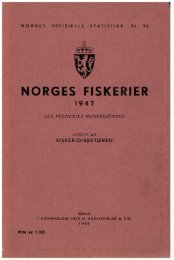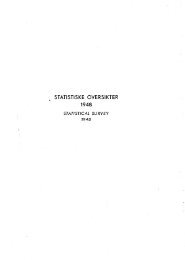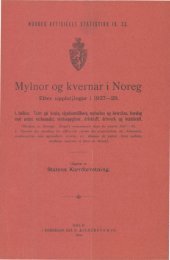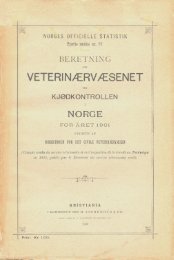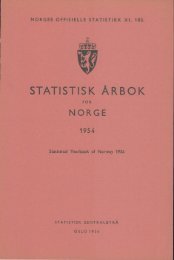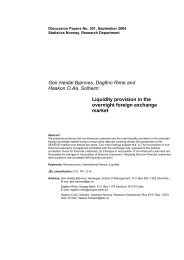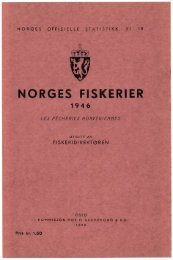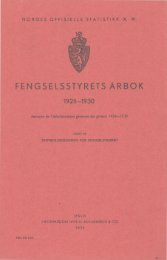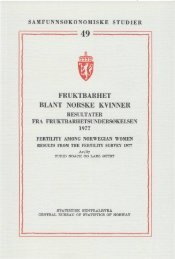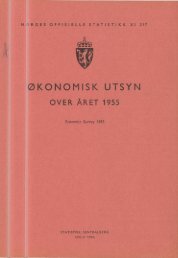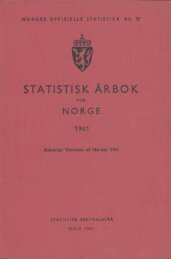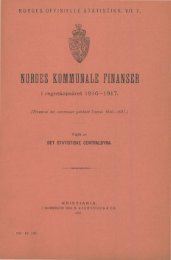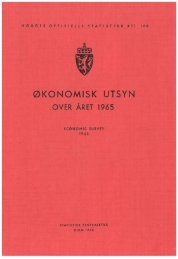Friluftsliv, idrett og mosjon - SSB
Friluftsliv, idrett og mosjon - SSB
Friluftsliv, idrett og mosjon - SSB
You also want an ePaper? Increase the reach of your titles
YUMPU automatically turns print PDFs into web optimized ePapers that Google loves.
97<br />
The participation in individual activities is shown in table 6.<br />
Participation in outdoor life was higher than participation in<br />
religious and cultural activities outside the home. Participation in<br />
several individual sport and exercise activities equalled the number of<br />
visits to cultural institutions.<br />
To set participation in outdoor life in an international perspective,<br />
Norwegian figures were compared to figures from Sweden and the<br />
United States. Norwegian participation rates are approximately the<br />
same as the Swedish but are higher than those for the United States.<br />
The distribution of participants by age, sex, income and education is<br />
fairly similar to what surveys in the other countries have shown (see<br />
table I).<br />
This study is focused on the following factors behind participation:<br />
the need for physical activity and release from tensions of modern urban<br />
life, personal resources such as health, learned skills and experiences,<br />
access to equipment, the amount of leisure time available and finally<br />
access to various types of recreational facilities.<br />
The findings suggest that participation in outdoor recreation,<br />
sport and exercise is independent of the amount of manual labour which<br />
students and economically active persons have during school and work.<br />
Participation was also shown to be independent of the degree of urbanity.<br />
Persons having primarily sedentary work and persons living in cities did<br />
not have a higher rate of participation than persons engaged in physical<br />
labour or living in rural areas - other factors being equal.<br />
Physical health was, however, an important determinant.<br />
Approximately 23 per cent of the population from 15 to 74 years of age<br />
had difficulties running 100 meter, walking 100 meter quickly or<br />
climbing stairs. Participation in outdoor recreation sport and exercise<br />
in general and in strenuous activities in particular was much lower for<br />
these persons than for those having a better physical condition. The<br />
poorer the physical health defined by these indications the lower the<br />
participation rate was.<br />
The possibilities for participation in outdoor recreation, sport,<br />
and exercise is also dependent on the learning of prerequisite skills.<br />
Only 20 per cent of persons aged 15-74 unable to swim visited the beach,<br />
while nearly 70 per cent of those who could swim made such a visit.<br />
Swimming lessons are now a common part of school curriculum and<br />
96 per cent of youths have learned to swim. The lack of swimming skills<br />
will therefore be less of an obstacle to participation in the future.



